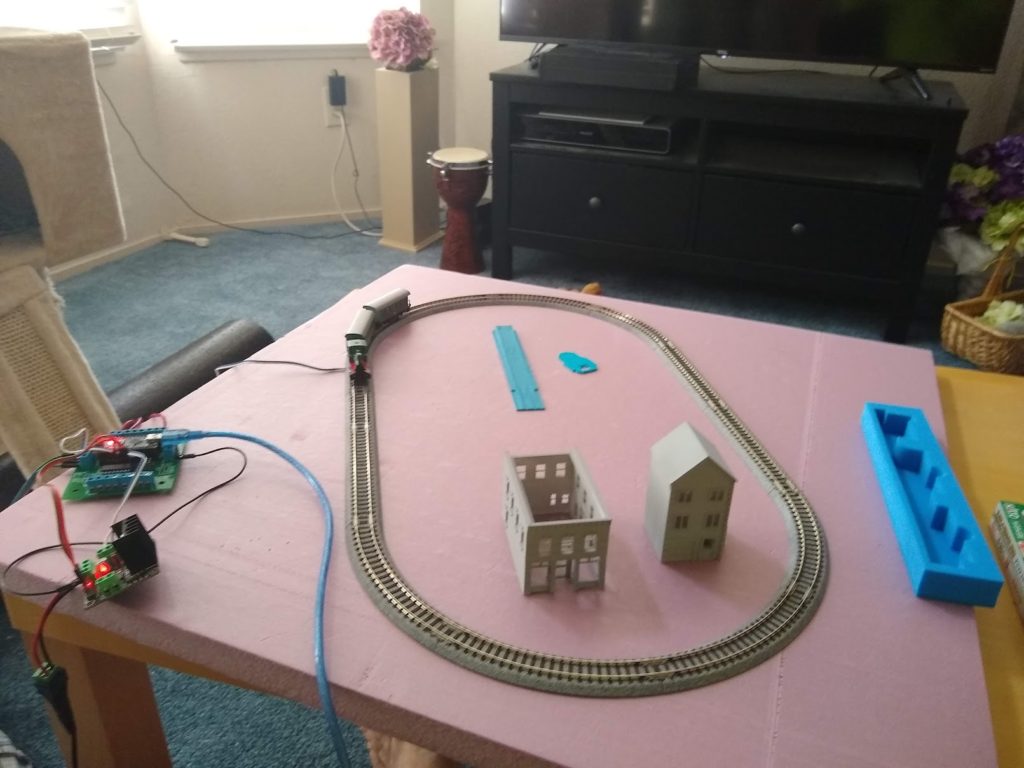Okay, I’m super busy at work these days at work, but I do still have time to muse about projects that I’ll be getting to once my current project wraps up sometime in about 12 weeks. If you were following my blog, you saw that my intention was to get a couple of very small and inexpensive N scale locomotives, and then homebrew a throttle control/power supply using an Arduino and a DC motor control module.
I got that working!

This is just a simple oval of track running on a 2’x2′ chunk of pink foam I got from Home Depot. The locomotive is a little “Pocket Line” locomotive made by Kato. I also got a small trolley from the same line. I haven’t done much with them other than build them a nice little box to hold them:

Anyway, the other day I was in the workshop and was thinking of building a small table to hold the 2’x2′ section, and which I could start building some scenery and the like. But as I was musing the details, I began to think about the possibility of building it as a series of modules instead (or at least, make it compatible with modular standards).
I knew about NTRAK, a modular specification built around the idea of 2’x4′ modules which could be connected together to make bigger modules. I thought that was a pretty cool idea. But the reality is that I didn’t really want to build a large layout, at least not at first (the module above is actually only half the size of a standard N Track module) and I thought it might be overkill.
But while searching around, I found out about T-Trak, an even smaller standand.
It’s a pretty neat for someone who wants to get into model railroad modeling, but doesn’t want to invest a ton of time or money. A single width module is just 308mm wide, and up to 14″ deep, with a pair of tracks that run parallel to each 38mm from the front edge, and spaced 33mm apart. They specify using Kato Unitrack, which is what I used in my oval. Two packs of 4 segments is enough to make two modules, so the track isn’t expensive. You can also make corner segments, and then use them to assemble ovals or other more complex layouts.
It’s perhaps easiest to see how the basic construction looks by watching a video:
Because it’s a standard format, large sets can be chained together, such as the following at the National Train show in 2018:
It seems like a cool way to decentralize development of a large scale setup for a club, but also to enable people to get started without a large investment of time or space.
Neat.
The Unofficial T-Trak Handbook page has a lot of good information too.